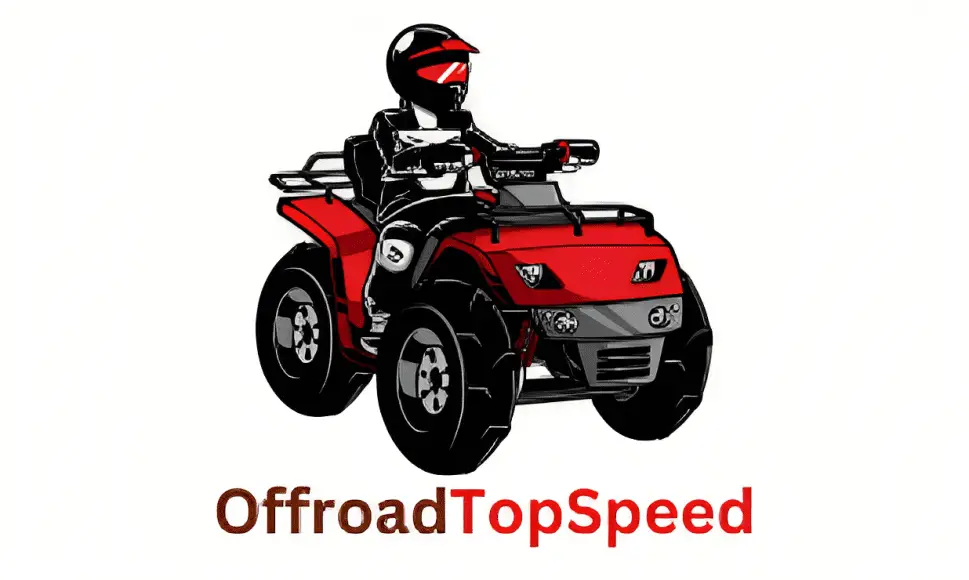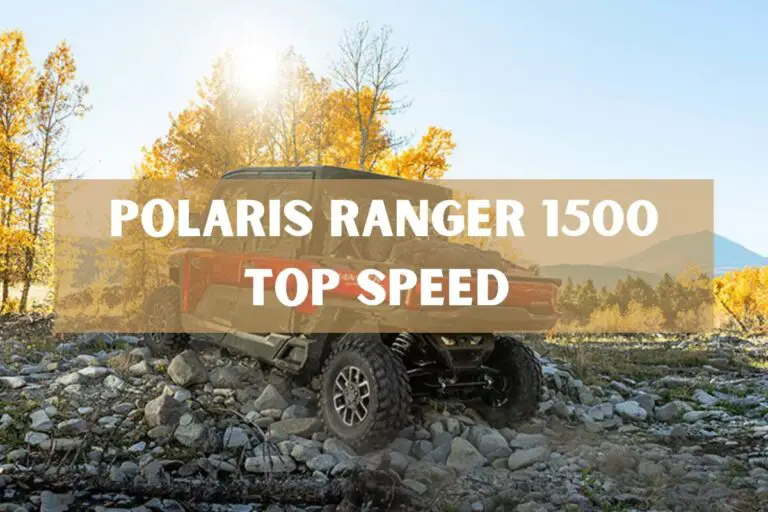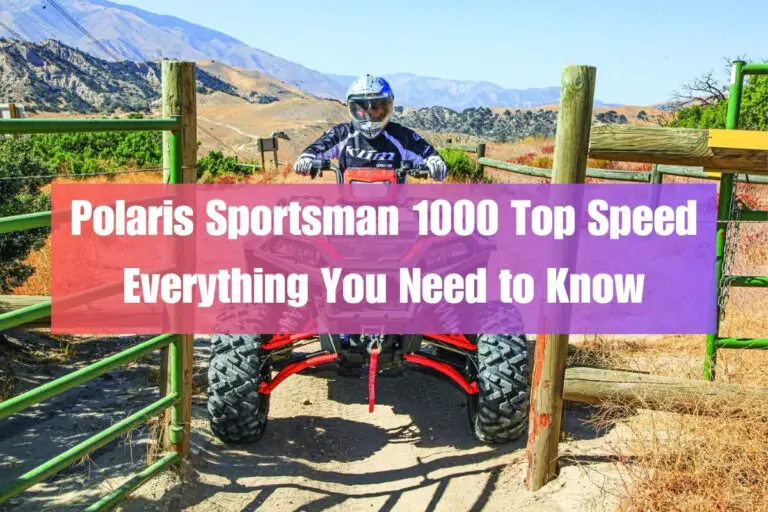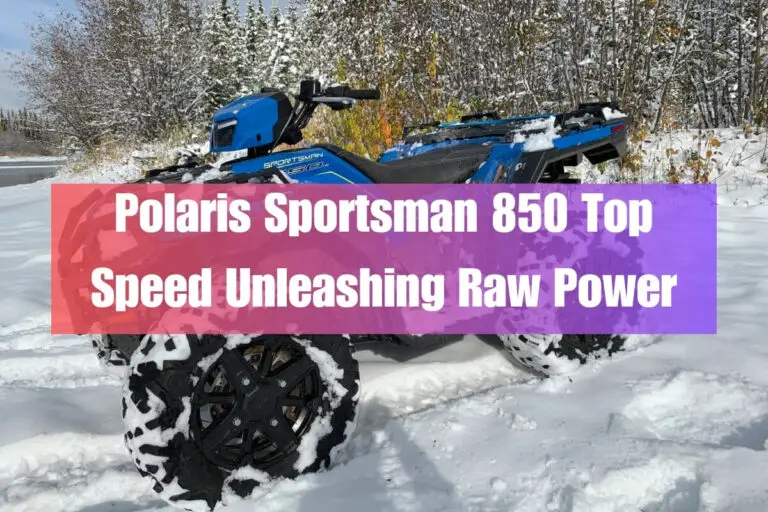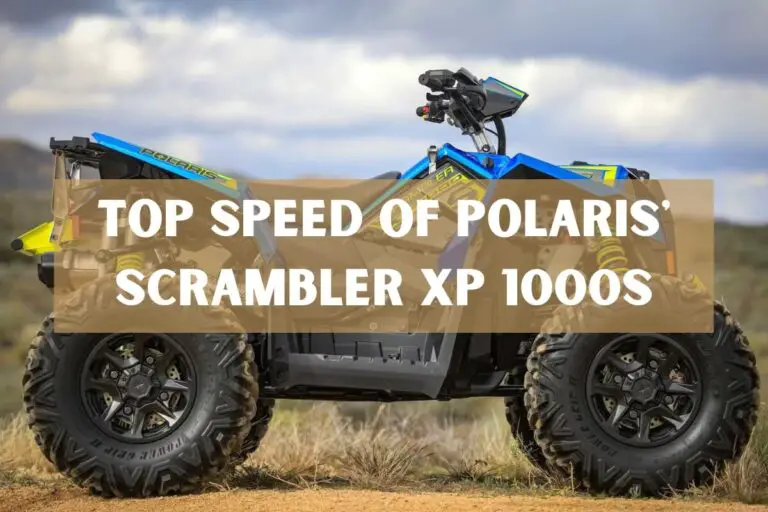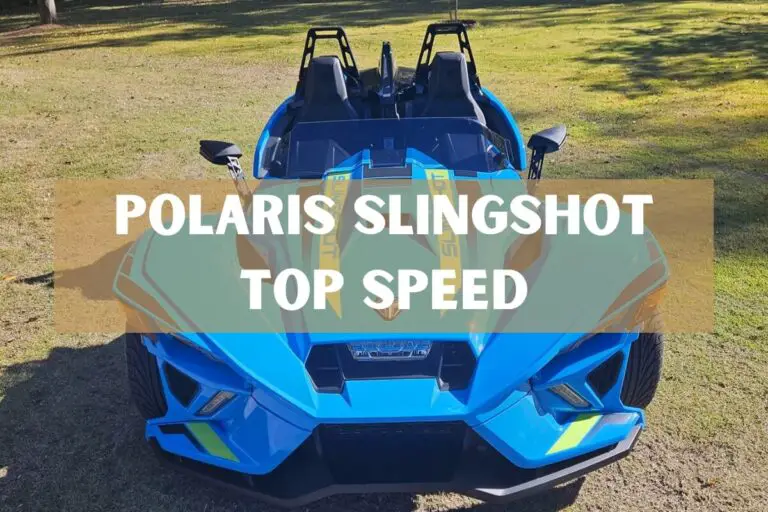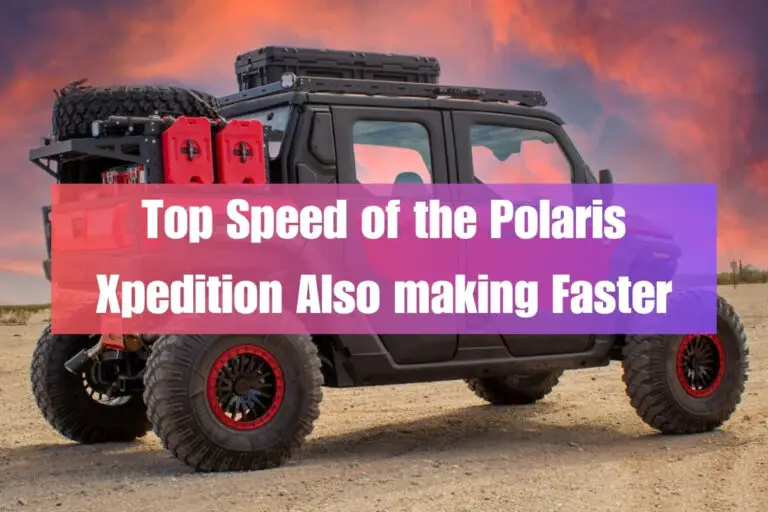Uncovering Polaris General Top Speed: An In-Depth Look
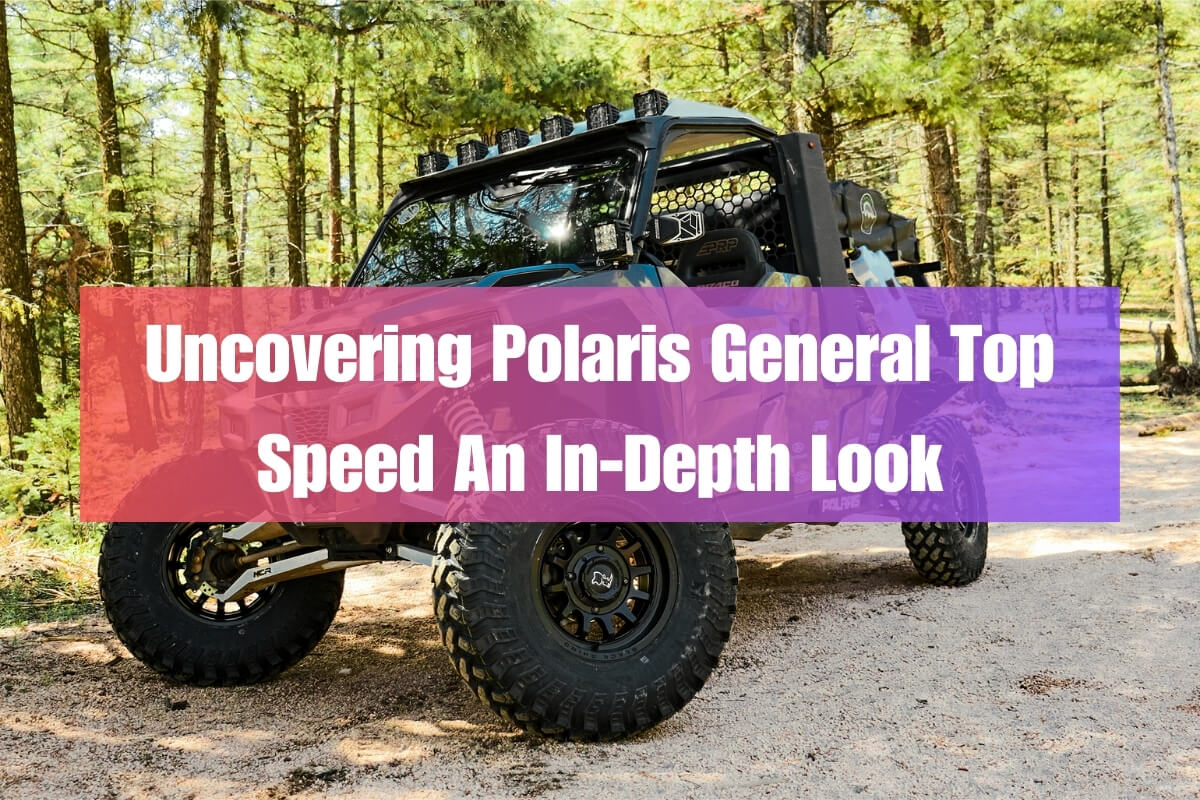
If you’re an adrenaline junkie or love the thrill of off-road adventures, you’ve likely heard about the Polaris General. This versatile and rugged side-by-side vehicle (SxS) has become a popular choice among outdoor enthusiasts. One question that often comes up is: “What is the top speed of the Polaris General?”
This guide talks about the top speed of the Polaris General 1000 and XP 1000 models. It will look at things that affect speed. It will share insights on real-world performance from owners. It will compare the speed to other similar vehicles. It will give tips to stay safe while going fast. Get ready to learn about speed!
Polaris General Overview
The Polaris General is a crossover utility vehicle designed for both work and recreation. Launched in 2016, it quickly gained popularity for its impressive combination of power, utility, and off-road prowess.
The current lineup includes two main models:
- Polaris General 1000: Powered by a 999cc twin-cylinder engine producing 100 horsepower. It features a 600-pound dumping cargo box, 1,500-pound towing capacity, and True On-Demand All-Wheel Drive (AWD).
- Polaris General XP 1000: Shares the same 100 HP engine as the 1000 but adds larger 30-inch tires, high clearance A-arms, and a heavy-duty 4,500-pound winch. Available in 2-seat and 4-seat configurations.
Both models boast impressive utility features like a versatile cargo box, towing capacity, and smooth-riding suspension with over 12 inches of ground clearance. However, many buyers are also curious about their performance capabilities, especially top speed.
Top Speed and Performance
So, how fast can the Polaris General really go? Let’s look at the numbers:
- Polaris General 1000: Factory top speed of 70 mph (113 km/h)
- Polaris General XP 1000: Factory top speed of 65 mph (105 km/h)
However, some owners have reported achieving speeds as high as 79 mph (127 km/h) or even 80 mph (129 km/h) on the XP 1000 with modifications.
Beyond just the top speed number, the Polaris General delivers impressive performance across the board:
- Acceleration: The 100 HP engine provides quick acceleration and responsive power delivery.
- Torque: With 59 lb-ft of torque, the General has plenty of low-end grunt for climbing hills and powering through tough terrain.
- Suspension: The long-travel suspension (up to 14 inches) and ground clearance (up to 13.5 inches) enable smooth riding over obstacles and uneven surfaces.
Key Specifications
| Specification | Polaris General 1000 | Polaris General XP 1000 |
|---|---|---|
| Engine | 999cc Twin-Cylinder | 999cc Twin-Cylinder |
| Horsepower | 100 HP | 100 HP |
| Torque | 59 lb-ft | 59 lb-ft |
| Transmission | Automatic PVT | Automatic PVT |
| Drive System | True On-Demand AWD | True On-Demand AWD |
| Suspension Travel (Front/Rear) | 12.25″ / 13.2″ | 14″ / 14″ |
| Ground Clearance | 12″ | 13.5″ |
| Fuel Capacity | 9.5 gallons | 9.5 gallons |
| Towing Capacity | 1,500 lbs | 1,500 lbs |
| Cargo Box Capacity | 600 lbs | 600 lbs |
As you can see, the Polaris General packs a serious punch in terms of performance, while still maintaining impressive utility and off-road capabilities.
What Determines the Top Speed?
While the factory top speed ratings give you a baseline, several factors can influence how fast your Polaris General can actually go:
- Engine Modifications: Upgrading components like the air intake, exhaust system, or remapping the Engine Control Unit (ECU) can unleash more power and increase the top speed potential.
- Tire Size and Type: Larger tires with more aggressive tread patterns can increase top speed capability by improving gearing and traction, but may also increase drivetrain strain.
- Gearing and Drivetrain: Installing different gear ratios or upgrading drivetrain components can impact acceleration and top-end speed.
- Weight Reduction: Removing unnecessary weight from the vehicle, such as accessories or cargo, can improve acceleration and potentially top speed.
- Aerodynamics: While not a major factor for off-road vehicles, improving aerodynamics through accessories like wind deflectors can marginally increase top speeds.
- Terrain and Driving Conditions: The Polaris General’s true top speed potential is best achieved on flat, smooth surfaces. Rough terrain, mud, sand, or steep inclines will significantly limit maximum speeds.
As you can see, various modifications and factors come into play when trying to extract maximum velocity from your Polaris General.
Owner Reviews on Speed
But what do real Polaris General owners have to say about its speed capabilities? Let’s look at some reviews:
Positive Reviews
“My General XP 1000 is an absolute blast! With just a few basic mods like an air intake and exhaust, I’ve seen speeds over 75 mph on flat trails. The power and acceleration are phenomenal for an SxS this size.” – OffRoadEnthusiast, Arizona
“I was skeptical about the General’s top speed at first, but I’ve been pleasantly surprised. Even stock, it can easily hit 65-70 mph on open roads, which is more than enough for most trail riding and exploring.” – AdventureBiker, Colorado
Negative Reviews
“Don’t get the General if you want a pure speed machine. While it’s fast for its class, it can’t quite keep up with dedicated performance SxS models like the RZR Turbo when it comes to outright top speed.” – SpeedDemon, Florida
“The General is great for adventuring and utility work, but its top speed leaves something to be desired, especially when loaded down with cargo or passengers.” – WorkhorseFarmer, Texas
As you can see, opinions are mixed. Many owners are impressed with the General’s speed for its class, but some wish for even more straight-line performance, especially compared to dedicated performance models.
Top Speed Comparisons
Speaking of competitors, how does the Polaris General’s top speed stack up against other popular side-by-side models?
- Polaris RZR XP Turbo: Up to 105 mph
- Can-Am Maverick X3 Turbo: Up to 100 mph
- Honda Talon 1000R: Up to 85 mph
- Kawasaki Teryx KRX 1000: Up to 76 mph
- Yamaha Wolverine X4 850: Up to 65 mph
While the Polaris General holds its own in terms of speed, it’s clear that pure performance models from Polaris (RZR) and Can-Am have a slight edge when it comes to outright top speed capabilities.
However, the General makes up for this with its superior utility features, smooth ride quality, and better pricing compared to these dedicated high-speed machines.
Top Mods to Increase Top Speed
If you’re looking to extract every last mph from your Polaris General, there are several popular modifications to consider:
- Performance Air Intakes: Replacing the stock air intake with a high-flow aftermarket unit can improve airflow and increase horsepower.
- Exhaust Systems: An aftermarket exhaust system reduces backpressure and can provide a decent power boost.
- Engine Remapping/Tuning: Reprogramming the Engine Control Unit (ECU) to optimize fuel and ignition maps can unlock significant horsepower gains.
- Bigger Tires and Wheel Spacers: Installing larger tires (up to 32″) and wheel spacers can improve gearing for higher top speeds, but may require other drivetrain upgrades.
Pros and Cons of Increasing Top Speed
While modifying your Polaris General for higher top speeds can be thrilling, it’s important to weigh the pros and cons:
Pros:
- Increased power and acceleration
- Ability to reach higher top speeds
- Improved gearing for better high-speed performance
- Potential for better traction with larger tires
Cons:
- Added strain on drivetrain components (axles, bearings, etc.)
- Reduced fuel efficiency at higher speeds
- Increased wear and tear, potentially impacting longevity
- Potential voiding of warranty if not done properly
- Added costs for performance parts and labor
Ultimately, the decision to modify your Polaris General for more speed comes down to your priorities and intended use. If you prioritize maximum performance over utility and longevity, the right upgrades can unlock impressive speed capabilities.
Polaris General Top Speed Pros
Even in stock form, the Polaris General offers several advantages when it comes to its speed and performance:
- Impressive Power and Acceleration: With 100 horsepower and robust low-end torque, the General provides thrilling acceleration and responsiveness, especially for its size and utility.
- Capable Off-Road Performance: The long-travel suspension, generous ground clearance, and true all-wheel drive system allow the General to maintain impressive speeds over rough terrain.
- Practical Utility Features: Unlike dedicated performance models, the General doesn’t sacrifice cargo capacity, towing ability, or smooth ride quality in pursuit of pure speed.
- More Affordable Than Competitors: Compared to high-end performance SxS models, the Polaris General offers a compelling blend of speed, utility, and value.
Polaris General Top Speed Cons
However, the General’s speed capabilities are not without their drawbacks:
- Not a Pure Performance Model: While fast for its class, the General can’t quite match the outright top speed of dedicated performance side-by-sides like the Polaris RZR or Can-Am Maverick X3.
- Lower Top Speed Than RZR Models: Even within the Polaris lineup, the General’s top speed is lower than the higher-performance RZR models.
- Reduced Range/Efficiency at High Speeds: Pushing the General to its top speed for extended periods can significantly reduce fuel efficiency and range.
- More Expensive Than Some Competitors: While a value proposition, the General is still pricier than some basic utility SxS models from competitors like Kawasaki or Yamaha.
It’s important to have realistic expectations and understand that the Polaris General is designed as a versatile crossover vehicle, not a pure speed machine.
Alternatives to Consider
If the Polaris General’s top speed capabilities don’t quite meet your needs, there are several alternatives worth considering:
- Can-Am Defender: Known for its impressive speed and power, the Defender lineup offers models like the Pro DPS and XT with top speeds up to 80 mph.
- Honda Pioneer 1000: A direct competitor to the General, the Pioneer 1000 offers slightly lower top speeds but a smoother, more refined ride quality.
- Kawasaki Teryx KRX 1000: A dedicated performance model, the Teryx KRX 1000 can hit top speeds of around 76 mph while still offering decent utility.
- Yamaha Wolverine X4 850: A more budget-friendly option, the Wolverine X4 850 sacrifices some top-end speed but excels in off-road capability and value.
Ultimately, your decision will depend on your specific needs and priorities, whether you value outright speed over utility, or vice versa.
Who Should/Shouldn’t Buy the Polaris General?
Based on its capabilities and performance, the Polaris General is an excellent choice for:
- Outdoor enthusiasts and adventurers who prioritize a balanced blend of speed, utility, and off-road capability.
- Those seeking a versatile vehicle for both work and recreational use, without compromising too much in either area.
- Buyers looking for a high-performance side-by-side at a more accessible price point than dedicated performance models.
However, the Polaris General may not be the best fit for:
- Riders solely focused on achieving the highest possible top speeds, with little need for utility features.
- Those frequently towing or hauling very heavy loads, as the General’s towing capacity is relatively modest compared to larger utility vehicles.
- Buyers on a tight budget who can sacrifice some performance for a more affordable basic utility SxS.
As with any vehicle purchase, it’s crucial to assess your specific needs and priorities to determine if the Polaris General’s blend of speed, utility, and value aligns with your intended use case.
Common Issues and Troubleshooting
While the Polaris General is a well-engineered and reliable machine, no vehicle is perfect. Here are some common issues owners may encounter, along with troubleshooting tips:
- Engine Overheating at High Speeds: Prolonged high-speed operation can cause the engine to overheat, especially in hot weather or challenging terrain. Ensure proper maintenance, use a quality cooling system additive, and consider installing an auxiliary cooling fan.
- Driveline/Drivetrain Wear and Tear: The added stress of higher speeds and aggressive driving can accelerate wear on components like axles, CV joints, and bearings. Regularly inspect and maintain these components, and consider upgrading to heavy-duty replacements if pushing the limits.
- Electronic Module Failures: The General’s electronic control modules (ECMs) can sometimes fail, leading to issues with the engine, transmission, or other systems. Proper maintenance, avoiding water intrusion, and using high-quality replacement parts can help prevent these failures.
- Recommended Maintenance: Follow the manufacturer’s recommended maintenance schedule religiously, including regular fluid changes, filter replacements, and inspections. This can help catch potential issues before they become major problems.
By being proactive with maintenance and addressing issues promptly, you can help ensure your Polaris General continues to deliver reliable performance and speed for years to come.
FAQs on Polaris General Top Speed
Still have questions about the Polaris General’s top speed capabilities? Here are some frequently asked questions:
Is the XP 1000 faster than the 1000?
Yes, the Polaris General XP 1000 is slightly faster than the standard 1000 model, with a factory top speed of 65 mph compared to 70 mph for the 1000.
How fast is it stock from the factory?
Out of the box, the Polaris General 1000 has a top speed of 70 mph, while the XP 1000 is rated for 65 mph.
What’s the top speed on dirt/mud/sand?
The General’s top speed capabilities are heavily dependent on terrain. On loose surfaces like dirt, mud, or sand, expect maximum speeds to be significantly lower than the factory ratings.
Is it street legal at top speeds?
No, the Polaris General is not designed for sustained high-speed operation on paved roads and is not street legal at its top speeds in most areas.
How much do speed mods cost?
The cost of performance modifications can vary widely, from a few hundred dollars for basic intake and exhaust upgrades to several thousand for a full engine build and tuning package.
Conclusion
The Polaris General’s top speed is just one aspect of its impressive overall performance capabilities. With factory ratings of 70 mph for the General 1000 and 65 mph for the XP 1000 (though some owners have achieved even higher speeds with modifications), this versatile side-by-side strikes a compelling balance between speed, utility, and off-road prowess.
While it may not be the outright speed king compared to dedicated performance models, the Polaris General excels in its ability to deliver thrilling acceleration, smooth riding dynamics, and genuine all-terrain capability – all while maintaining practical features like a generous cargo box and towing capacity.
By understanding the factors that influence top speed, weighing the pros and cons of modifications, and considering alternatives that better align with your priorities, you can make an informed decision on whether the Polaris General’s speed capabilities meet your needs.
Ultimately, for those seeking a well-rounded, high-performance side-by-side that doesn’t sacrifice utility or affordability, the Polaris General’s top speed – combined with its impressive overall package – makes it a compelling choice for outdoor adventures and off-road thrills.
